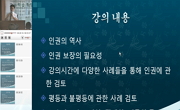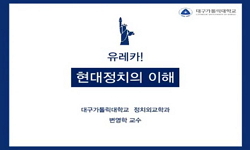This paper aims to explore the effects of spouses’ earnings association on household inequality in South Korea during the last 25 years. To better analyze the impact of couples`` earning association, I decompose the association into three dimensions...
http://chineseinput.net/에서 pinyin(병음)방식으로 중국어를 변환할 수 있습니다.
변환된 중국어를 복사하여 사용하시면 됩니다.
- 中文 을 입력하시려면 zhongwen을 입력하시고 space를누르시면됩니다.
- 北京 을 입력하시려면 beijing을 입력하시고 space를 누르시면 됩니다.

부부의 근로소득연관성과 가구근로소득 불평등 관계에 관한 연구 = Income Inequality and Association between Spouses` Earnings in South Korea
한글로보기https://www.riss.kr/link?id=A101744145
- 저자
- 발행기관
- 학술지명
- 권호사항
-
발행연도
2015
-
작성언어
-
-
주제어
불평등 ; 결혼시장 ; 가구근로소득불평등 ; 근로소득 ; 부부소득 ; 여성노동시장 ; marriage market ; income inequality ; women`s labor market participation
-
KDC
300
-
등재정보
KCI등재
-
자료형태
학술저널
- 발행기관 URL
-
수록면
5-32(28쪽)
-
KCI 피인용횟수
2
- DOI식별코드
- 제공처
-
0
상세조회 -
0
다운로드
부가정보
다국어 초록 (Multilingual Abstract)
This paper aims to explore the effects of spouses’ earnings association on household inequality in South Korea during the last 25 years. To better analyze the impact of couples`` earning association, I decompose the association into three dimensions. First, I would see if there are increases in the association between dual-earner couples`` earnings. Second, the relationship between husbands`` earnings and the odds that wives work is considered. Lastly, the mere increase of dual-earner couples is separately counted. I use log-linear models and Household Survey Data from 1990 to 2014.Log-linear models enable me to interpret each element``s contribution to inequality in a counter-factual terms. The results show that changes in the association explain inequality from 1.67% to 14.21%, depending on how you measure inequality. Not surprisingly, the negative relation between husbands`` earnings and the odds that wives work do not appear yet in Korea. This element largely offsets the other two elements`` influence on increasing inequality. Overall, the association between spouses’ earnings has not been putting serious threats on household inequality. While the income inequality appears to be a serious social problem in Korea, this result implies other than individual``s achievement plays an important role in increasing the household inequality.
참고문헌 (Reference)
1 여유진, "한국의 소득불평등 동향과 정책방향" 26 (26): 95-134, 2006
2 정진호, "최근의 소득불평등도 변화와 소득원천별 분해" 노동정책연구 1-18, 2001
3 정성미, "정규직의 사각지대"
4 김문길, "우리나라 소득불평등의 양상과 대응전략" 83-96, 2012
5 반정호, "우리나라 소득불평등 실태와 재분배 정책의 효과"
6 박상우, "소득불평등 추이와 요인분해" 한국경제통상학회 31 (31): 77-100, 2013
7 장지연, "소득불평등 심화의 메커니즘과 정책 선택" 민주사회정책연구원 (23) : 71-109, 2013
8 장지연, "소득계층별 여성 취업의 변화: 배우자 소득 수준을 중심으로" 한국산업노동학회 20 (20): 219-248, 2014
9 Agresti A., "범주형 자료분석 개론" 자유아카데미 2009
10 이병희, "노동시장 불평등과 가구소득 불평등" 32-43, 2014
1 여유진, "한국의 소득불평등 동향과 정책방향" 26 (26): 95-134, 2006
2 정진호, "최근의 소득불평등도 변화와 소득원천별 분해" 노동정책연구 1-18, 2001
3 정성미, "정규직의 사각지대"
4 김문길, "우리나라 소득불평등의 양상과 대응전략" 83-96, 2012
5 반정호, "우리나라 소득불평등 실태와 재분배 정책의 효과"
6 박상우, "소득불평등 추이와 요인분해" 한국경제통상학회 31 (31): 77-100, 2013
7 장지연, "소득불평등 심화의 메커니즘과 정책 선택" 민주사회정책연구원 (23) : 71-109, 2013
8 장지연, "소득계층별 여성 취업의 변화: 배우자 소득 수준을 중심으로" 한국산업노동학회 20 (20): 219-248, 2014
9 Agresti A., "범주형 자료분석 개론" 자유아카데미 2009
10 이병희, "노동시장 불평등과 가구소득 불평등" 32-43, 2014
11 이병희, "노동시장 불안정이 소득 불평등에 미치는 영향" 한국경제발전학회 13 (13): 215-242, 2007
12 김영미, "기혼여성 노동시장의 양극화와 가구소득 불평등의 변화" 비판사회학회 (77) : 79-106, 2008
13 김영미, "금융위기 이후 한국 소득불평등구조의 변화:소득불평등 분해, 1998~2005" 한국사회학회 41 (41): 35-63, 2007
14 이성균, "경제위기 이후 가구단위 소득 구성요소와 직업의 소득불평등 효과: 도시 임금소득자 가구를 중심으로" 한국노동연구원 8 (8): 119-146, 2008
15 김용학, "결혼시장에서의 가치 교환" 한국인구학회 36 (36): 69-95, 2013
16 이성균, "가구소득불평등과 직업구조" 51-81, 2007
17 Oppenheimer, V. K., "Women's rising employment and the future of the family in industrial societies" 293-342, 1994
18 Oppenheimer, V. K., "Women's employment and the gain to marriage: The specialization and trading model" 431-453, 1997
19 Juhn, C., "Wage inequality and family labor supply" National bureau of economic research 1996
20 Sweeney, M. M., "Two decades of family change: The shifting economic foundations of marriage" 132-147, 2002
21 Schwartz, C. R., "Trends in educational assortative marriage from 1940 to 2003" 42 (42): 621-646, 2005
22 Goldin, C., "The quiet revolution that transformed women's employment, education, and family" National Bureau of Economic Research 2006
23 Cancian, M., "The impact of wives’ earnings on income inequality: Issues and estimates" 36 (36): 173-184, 1999
24 Treas, J., "The effect of women's labor force participation on the distribution of income in the United States" 259-288, 1987
25 Simkus, A., "Structural transformation and social mobility: Hungary 1938-1973" 291-307, 1984
26 Kalmijn, M., "Status homogamy in the United States" 496-523, 1991
27 Jasso, G., "Status Generalization:New Theory and Research" Stanford University Press 123-164, 1987
28 Reed, D., "Sources of inequality: measuring the contributions of income sources to rising family income inequality" 47 (47): 321-333, 2001
29 Esping-Andersen, G., "Sociological explanations of changing income distributions" 50 (50): 639-658, 2007
30 Goldscheider, F., "Sex Differences in the Entry into Marriage" 92 : 91-109, 1986
31 Hyslop, D. R., "Rising US earnings inequality and family labor supply: The covariance structure of intrafamily earnings" 755-777, 2001
32 Lawler, E., "Power and the Emergence of Commitment Behavior in Negotiated Exchange" 58 : 465-481, 1993
33 Espenshade, T., "Marriage Trends in America: Estimates, Implications, and Underlying Causes" 11 : 193-245, 1985
34 Gottschalk, P., "Inequality of wage rates, earnings and family income in the United States, 1975–2002" 51 (51): 231-254, 2005
35 Lehrer, E., "Female labor force behavior and fertility in the United States" 181-204, 1986
36 OECD, "Employement Outlook 2009"
37 Harris, R. J., "Effects of wife's income on family income inequality" 10 (10): 211-232, 1981
38 Burtless, G., "Effects of growing wage disparities and changing family composition on the US income distribution" 43 (43): 853-865, 1999
39 Smits, J., "Educational homogamy in 65 countries: An explanation of differences in openness using country-level explanatory variables" 264-285, 1998
40 Park, H., "Educational assortative mating in South Korea: trends 1930-1998" 23 : 103-127, 2005
41 Breen, R., "Educational Assortative Mating and Earnings Inequality in the United States1" 117 (117): 808-843, 2011
42 Schwartz, C. R., "Earnings inequality and the changing association between spouses’earnings" 115 (115): 1524-, 2010
43 Maxwell, N. L., "Changing female labor force participation: Influences on income inequality and distribution" 68 (68): 1251-1266, 1990
44 Blackburn, M. L., "Changes in the Structure of Family Income Inequality in the United States and Other Industrial Nations During the 1980s" National Bureau of Economic Research 1994
45 Agresti, A., "Categorical data analysis" John Wiley & Sons 2013
46 Raftery, A. E., "Bayesian model selection in social research" 25 : 111-164, 1995
47 Cancian, M., "Assessing the effects of wives' earnings on family income inequality" 80 (80): 73-79, 1998
48 Becker, G. S., "A theory of marriage. Economics of the family: Marriage, children, and human capital" University of Chicago Press 299-351, 1974
49 Buss, D. M., "A half century of mate preferences : The cultural evolution of values" 63 (63): 491-503, 2001
50 이철희, "1996~2000년 한국의 가구소득불평등 확대 - 임금, 노동공급, 가구구조 변화의 영향 -" 한국노동경제학회 31 (31): 1-34, 2008
51 구인회, "1990년대 이후 도시근로자가구 소득불평등 악화의 요인분해 - 개인 근로소득 변화의 영향을 중심으로 -" 한국사회복지연구회 (34) : 5-27, 2007
52 김수정, "1990년대 말 경제위기 이후 기혼여성의 경제활동이 가구소득불평등에 미친 영향: 시뮬레이션 방법의 적용" 한국조사연구학회 15 (15): 93-122, 2014
동일학술지(권/호) 다른 논문
-
모의 심리적 특성 및 가정환경이 출산의도와 출산행동에 미치는 영향
- 한국사회복지연구회
- 배광일 ( Gwang Il Bae )
- 2015
- KCI등재
-
정신장애인 사회복귀시설의 취업률에 영향을 미치는 기관 특성
- 한국사회복지연구회
- 하경희 ( Kyunghee Ha )
- 2015
- KCI등재
-
성폭력 피해자를 돕는 사회복지사들의 분투와 성장: 원스톱 위기개입 현장 사회복지사들의 경험을 중심으로
- 한국사회복지연구회
- 정혜숙 ( Hye Suk Chong )
- 2015
- KCI등재
-
- 한국사회복지연구회
- 이재은 ( Jaeeun Lee )
- 2015
- KCI등재
분석정보
인용정보 인용지수 설명보기
학술지 이력
| 연월일 | 이력구분 | 이력상세 | 등재구분 |
|---|---|---|---|
| 2027 | 평가예정 | 재인증평가 신청대상 (재인증) | |
| 2021-01-01 | 평가 | 등재학술지 유지 (재인증) |  |
| 2018-01-01 | 평가 | 등재학술지 유지 (등재유지) |  |
| 2015-01-01 | 평가 | 등재학술지 유지 (등재유지) |  |
| 2011-01-01 | 평가 | 등재학술지 유지 (등재유지) |  |
| 2009-01-01 | 평가 | 등재학술지 유지 (등재유지) |  |
| 2007-01-01 | 평가 | 등재학술지 유지 (등재유지) |  |
| 2004-01-01 | 평가 | 등재학술지 선정 (등재후보2차) |  |
| 2003-01-01 | 평가 | 등재후보 1차 PASS (등재후보1차) |  |
| 1999-01-01 | 평가 | 등재후보학술지 선정 (신규평가) |  |
학술지 인용정보
| 기준연도 | WOS-KCI 통합IF(2년) | KCIF(2년) | KCIF(3년) |
|---|---|---|---|
| 2016 | 1.63 | 1.63 | 1.68 |
| KCIF(4년) | KCIF(5년) | 중심성지수(3년) | 즉시성지수 |
| 1.77 | 1.86 | 2.075 | 0.15 |





 KCI
KCI KISS
KISS






